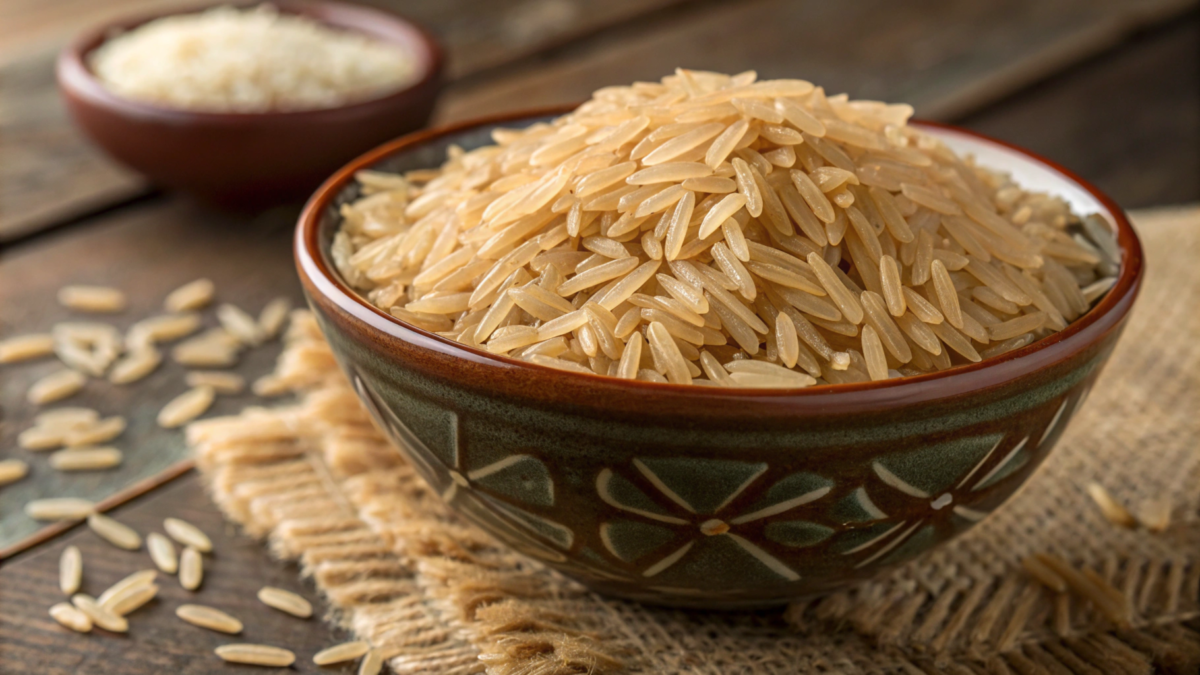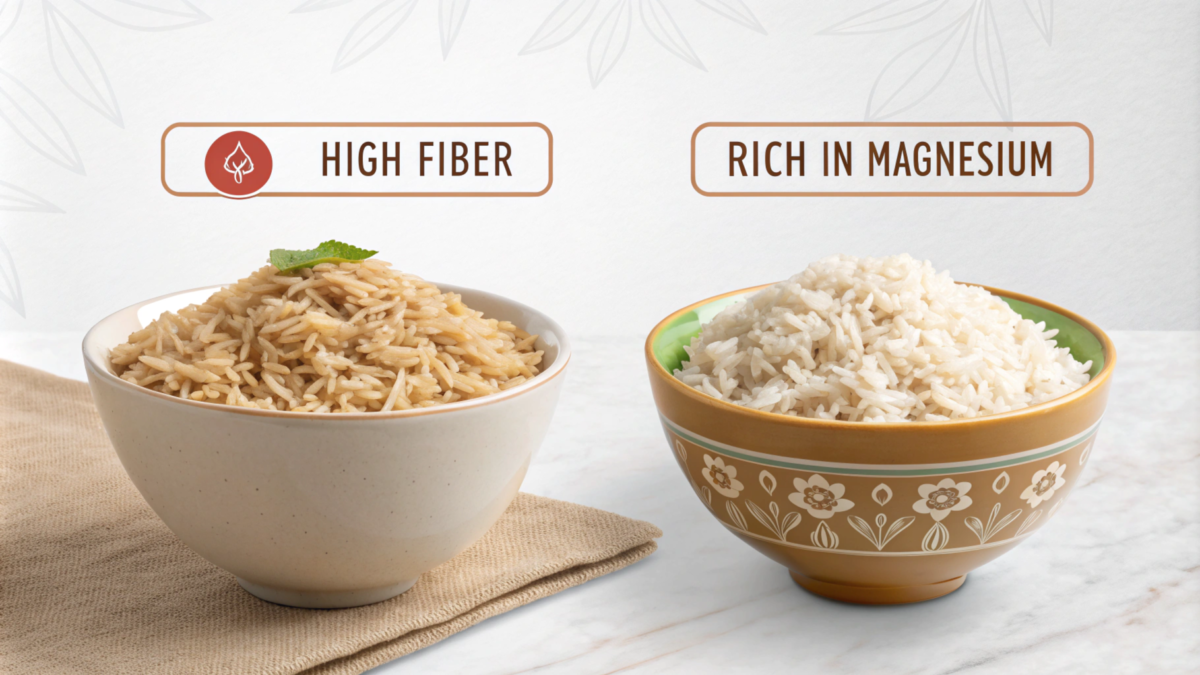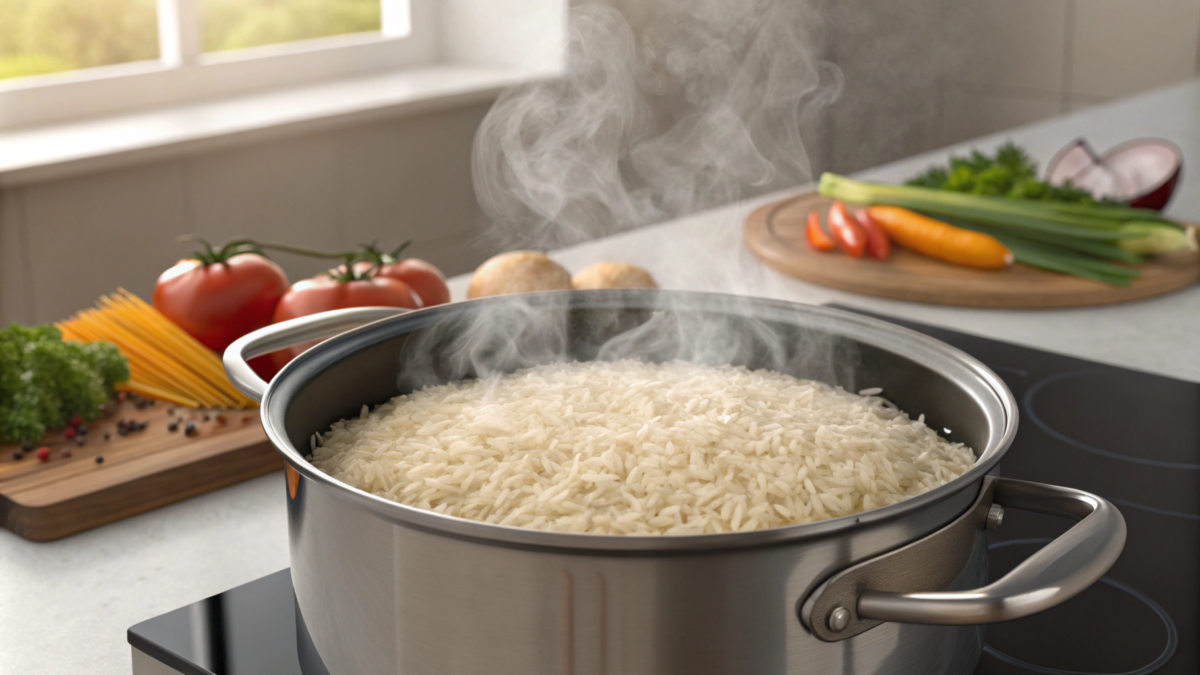Introduction
When it comes to brown basmati rice and wholegrain basmati rice, many people find themselves puzzled over whether these two are the same or different. While both are prized for their nutritional benefits and rich flavor, subtle differences in processing, taste, and health benefits set them apart. In this article, we’ll explore what makes brown basmati rice unique, what defines wholegrain basmati rice, and whether they truly are identical. Along the way, we’ll delve into their nutritional profiles, health advantages, and even the best ways to cook and enjoy these versatile grains.
Part 1: Understanding Brown Basmati Rice and Wholegrain Basmati Rice
What is Brown Basmati Rice?
Brown basmati rice is a type of rice that retains its outer bran layer, giving it a distinct nutty flavor and chewy texture. Unlike its white counterpart, it’s minimally processed, keeping its natural fiber, vitamins, and minerals intact. Its long grains and aromatic qualities make it a favorite choice for health-conscious individuals and culinary enthusiasts alike.
Characteristics of Brown Basmati Rice
Brown basmati rice is easily recognizable for its earthy brown color and slender grains. Because it retains the bran and germ layers, it has a slightly longer cooking time compared to white basmati rice. These layers are what make it rich in nutrients like dietary fiber, B vitamins, and antioxidants.
Nutritional Profile of Brown Basmati Rice
Brown basmati rice stands out for its impressive nutritional content. Packed with fiber that promotes digestion, it also contains magnesium, selenium, and manganese, which are crucial for overall health. Its glycemic index is lower than white rice, making it a better choice for managing blood sugar levels. Plus, the presence of essential amino acids makes it a complete protein source when paired with legumes or vegetables.
What is Wholegrain Basmati Rice?
Wholegrain basmati rice, on the other hand, is a broader term encompassing any basmati rice variety that retains all three parts of the grain: the bran, germ, and endosperm. This whole structure ensures that the rice remains nutrient-dense and hearty. Like brown basmati rice, wholegrain basmati is less processed, but it might also include other varieties with the bran layer intact.
Characteristics of Wholegrain Basmati Rice
Wholegrain basmati rice shares similarities with brown basmati rice but may vary slightly in grain size or texture depending on the specific variety. It is firm, chewy, and boasts a slightly nutty taste. Moreover, its vibrant texture and flavor make it ideal for salads, pilafs, and hearty side dishes.
Nutritional Profile of Wholegrain Basmati Rice
Similar to brown basmati rice, wholegrain basmati is a powerhouse of dietary fiber, vitamins, and minerals. It supports heart health, aids digestion, and contributes to maintaining a healthy weight. Furthermore, wholegrain basmati contains complex carbohydrates, providing steady energy without sudden spikes in blood sugar.
Part 2: Defining the Terms
What is Brown Basmati Rice?
Brown basmati rice is a whole grain, retaining its outer bran and germ layers, which give it a natural nutty flavor and chewy texture. Unlike white basmati rice, brown basmati undergoes minimal processing, preserving its nutritional richness. This aromatic grain is a staple in many cuisines and is often hailed for its health benefits, especially among those seeking fiber-rich and nutrient-dense foods.
Characteristics of Brown Basmati Rice
Brown basmati rice is distinctive due to its long, slender grains and light brown color. The outer bran layer gives it a slightly coarse texture and an earthy taste. Its cooking time is longer compared to white rice because of the retained bran, which also adds to its chewiness. This rice is versatile, lending itself to a variety of dishes, from savory pilafs to wholesome rice bowls.
Nutritional Profile of Brown Basmati Rice
Packed with fiber, brown basmati rice promotes digestive health and aids in maintaining regularity. It’s a source of essential minerals like magnesium, which supports muscle function, and selenium, known for its antioxidant properties. Its lower glycemic index makes it a smart choice for managing blood sugar. Additionally, brown basmati contains B vitamins like thiamine, which helps in energy production and nerve function.
What is Wholegrain Basmati Rice?
Wholegrain basmati rice is a term that broadly refers to any basmati rice variety that retains its bran, germ, and endosperm. This category often includes brown basmati rice, but it may also encompass other minimally processed basmati types. The retention of the entire grain structure ensures that wholegrain basmati is nutrient-dense and offers numerous health advantages.
Characteristics of Wholegrain Basmati Rice
The wholegrain version of basmati rice is robust in texture, with grains that are firm and chewy. It carries the characteristic nutty flavor of basmati, along with a slightly denser mouthfeel. The rich aroma and flavor make it a favorite for dishes where the rice needs to shine, such as salads or casseroles. Its bran layer not only enhances its texture but also adds to its rich nutritional profile.
Nutritional Profile of Wholegrain Basmati Rice
Wholegrain basmati rice is brimming with dietary fiber, which supports heart health and regulates digestion. It contains a wealth of essential nutrients like iron, vital for blood health, and zinc, which bolsters the immune system. The carbohydrates in wholegrain basmati are complex, offering a slow and steady energy release. Additionally, it’s rich in antioxidants and phytonutrients, making it an excellent choice for those seeking a balanced diet.
Part 3: Comparing Brown Basmati Rice and Wholegrain Basmati Rice
Are Brown Basmati Rice and Wholegrain Basmati Rice the Same?
The question of whether brown basmati rice and wholegrain basmati rice are the same often arises due to their similar appearance and shared reputation as nutritious options. While brown basmati rice is a type of wholegrain basmati rice, the terms are not entirely interchangeable. Brown basmati specifically refers to basmati rice with the outer bran layer intact, while wholegrain basmati is a broader term that encompasses all basmati rice varieties retaining their bran, germ, and endosperm.
Despite these nuances, their nutritional benefits and uses often overlap. Both types are minimally processed, retaining their natural nutrients and fiber. However, subtle differences in processing and nutrient composition may set them apart, influencing how they fit into different diets.
Processing Methods and Their Impact
The processing of brown basmati rice involves removing only the husk, leaving the bran layer and germ intact. This minimal processing keeps its nutrients, texture, and natural flavor robust. Wholegrain basmati, on the other hand, can refer to brown basmati or other basmati varieties that also undergo limited processing to preserve their complete grain structure.
These processing methods significantly impact cooking time and texture. Brown basmati, being slightly less processed, tends to require longer soaking and cooking times. Wholegrain basmati rice, depending on the specific type, may offer slightly different textures but remains firm and chewy due to the retained bran.
Nutritional Differences and Similarities
Nutritionally, both brown basmati rice and wholegrain basmati rice are rich in dietary fiber, essential for digestion and heart health. They share similar levels of complex carbohydrates, providing sustained energy. However, brown basmati rice may contain slightly higher levels of magnesium and selenium due to its specific grain variety.
One key similarity is their glycemic index; both types rank lower than white rice, making them suitable for managing blood sugar levels. Both varieties also provide antioxidants and essential amino acids, making them excellent choices for balanced meals. The subtle differences in nutrient levels may vary based on the grain’s variety and processing method, but overall, both are incredibly healthy staples.
Part 4: Health Implications
Health Benefits of Brown Basmati Rice
Brown basmati rice is more than just a delicious accompaniment; it’s a nutritional powerhouse offering numerous health benefits. Retaining its natural bran layer, this rice variety is rich in fiber, essential nutrients, and antioxidants, making it an excellent choice for promoting overall well-being.
Fiber Content and Digestive Health
One of the standout qualities of brown basmati rice is its high dietary fiber content. Fiber plays a pivotal role in digestive health, helping maintain regular bowel movements and preventing constipation. The insoluble fiber in brown basmati acts as a natural broom for the digestive tract, sweeping away waste and toxins. Furthermore, consuming fiber-rich foods like brown basmati can support gut health by feeding beneficial gut bacteria, which are crucial for a healthy microbiome.
Glycemic Index and Blood Sugar Control
With its low to medium glycemic index (GI), brown basmati rice is a fantastic option for those managing blood sugar levels. Foods with a lower GI release glucose gradually into the bloodstream, preventing sharp spikes and crashes. This makes brown basmati rice particularly suitable for individuals with diabetes or anyone seeking sustained energy throughout the day. The combination of fiber and complex carbohydrates ensures a slow, steady energy release, keeping hunger pangs at bay and supporting long-term blood sugar control.
Health Benefits of Wholegrain Basmati Rice
Wholegrain basmati rice shares many of the health advantages of brown basmati rice but offers additional benefits due to its comprehensive grain structure. Retaining the bran, germ, and endosperm, this rice variety delivers a complete package of essential nutrients and dietary fiber.
Essential Vitamins and Minerals
Wholegrain basmati rice is packed with vital nutrients such as magnesium, which supports muscle and nerve function, and zinc, essential for a strong immune system. It’s also a good source of B vitamins like thiamine and niacin, which are involved in energy metabolism. Additionally, the antioxidants present in the bran layer help combat oxidative stress, contributing to reduced inflammation and better overall health.
Role in Weight Management
For those seeking to maintain or lose weight, wholegrain basmati rice can be a helpful addition to the diet. Its high fiber content promotes a feeling of fullness, reducing the likelihood of overeating. The slow-digesting complex carbohydrates in this rice provide long-lasting energy, keeping cravings in check. Moreover, studies suggest that whole grains can positively impact metabolism and support weight management by improving satiety and reducing fat accumulation.
Part 5: Culinary Perspectives
Cooking Techniques for Brown Basmati Rice
Brown basmati rice has a distinct flavor and texture that can elevate a wide range of dishes. However, due to its bran layer, it requires a bit of extra care during preparation to achieve the perfect balance of tenderness and fluffiness.
Soaking and Preparation Methods
Soaking is key to making the most of brown basmati rice. Before cooking, it’s best to rinse the grains thoroughly under cold water to remove any excess starch, which can cause stickiness. Then, soak the rice in water for at least 30 minutes to an hour. This step softens the outer bran layer, reducing cooking time and ensuring even cooking.
For cooking, use a ratio of 1 cup of rice to 2 ½ cups of water, and simmer it gently with the lid on. Avoid stirring too much, as this can break the grains. If you prefer a softer texture, slightly increase the water quantity or cook it for an additional few minutes.
Flavor Profiles and Pairings
The nutty, earthy flavor of brown basmati rice pairs beautifully with robust spices like turmeric, cumin, and cardamom. It serves as a great base for dishes such as biryanis, pilafs, and grain bowls. Pair it with roasted vegetables, lean proteins, or hearty stews for a wholesome and satisfying meal. Adding a squeeze of lemon or a sprinkle of fresh herbs can further enhance its natural flavors.
Cooking Techniques for Wholegrain Basmati Rice
Wholegrain basmati rice, like its brown counterpart, requires careful preparation to bring out its best qualities. With its firm texture and rich flavor, it’s a versatile ingredient in both savory and slightly sweet dishes.
Optimal Cooking Times and Methods
Cooking wholegrain basmati rice starts with rinsing to remove excess starch and ensure a clean flavor. While soaking isn’t strictly necessary, it can reduce cooking time and improve the texture. For best results, soak it for about 30 minutes before cooking.
The ideal water-to-rice ratio is 1 cup of rice to 2 cups of water. Bring the water to a boil, then reduce the heat to a simmer and cook covered for 25 to 30 minutes. Fluff the rice with a fork after cooking to separate the grains. Pressure cookers or rice cookers can also be used for convenience while preserving the rice’s nutrients and texture.
Enhancing Taste and Texture
Wholegrain basmati rice’s nutty flavor makes it a perfect match for bold sauces, grilled meats, or fresh salads. To elevate its taste, cook it in vegetable or chicken stock instead of plain water. Adding aromatic ingredients like bay leaves, cinnamon sticks, or garlic cloves during cooking infuses the grains with additional layers of flavor.
For texture, let the rice rest for 5 minutes after cooking to allow the grains to firm up. Mixing in a drizzle of olive oil or a pat of butter can enhance its sheen and mouthfeel, making it a delight to eat in any dish.
Part 6: Frequently Asked Questions
FAQs about Brown Basmati Rice and Wholegrain Basmati Rice
Is brown basmati rice considered a whole grain?
Yes, brown basmati rice is a whole grain. It retains its bran, germ, and endosperm, which are stripped away in more refined types like white basmati rice. This intact structure preserves its high fiber content and essential nutrients, making it a healthier choice compared to its processed counterparts.
How does the glycemic index of brown basmati rice compare to white basmati rice?
Brown basmati rice has a lower glycemic index than white basmati rice. This means it releases glucose into the bloodstream more slowly, providing steady energy and preventing sharp blood sugar spikes. Its lower GI makes it particularly beneficial for those managing diabetes or aiming for better blood sugar control.
Can I substitute brown basmati rice for wholegrain basmati rice in recipes?
Absolutely! Brown basmati rice is a type of wholegrain basmati rice, so they can be used interchangeably in most recipes. However, keep in mind that both have slightly different textures and cooking times. Adjustments may be needed to achieve the desired consistency and flavor.
What are the storage requirements for brown and wholegrain basmati rice?
Both types should be stored in airtight containers in a cool, dry place away from direct sunlight. This prevents moisture absorption and prolongs shelf life. For long-term storage, particularly in humid climates, refrigeration or freezing is recommended to prevent spoilage or infestation.
Are there any potential allergens in brown or wholegrain basmati rice?
Brown and wholegrain basmati rice are naturally gluten-free and unlikely to cause allergies in most individuals. However, cross-contamination during processing is possible, so those with severe allergies or sensitivities should opt for rice labeled as gluten-free or processed in allergen-free facilities.
How do brown and wholegrain basmati rice impact heart health?
Both brown and wholegrain basmati rice support heart health due to their high fiber content, which helps lower cholesterol levels. Additionally, their magnesium and antioxidant content contribute to better cardiovascular health by reducing inflammation and promoting healthy blood pressure levels.
Part 7: Conclusion
Summarizing the Similarities and Differences
Brown basmati rice and wholegrain basmati rice share a lot in common, particularly their health benefits, nutritional profiles, and minimal processing. Brown basmati rice is a specific type of wholegrain rice, but not all wholegrain basmati rice is necessarily brown. While their differences may seem subtle, they can impact cooking methods, texture, and even nutrient composition slightly.
Both are excellent choices for a balanced diet, offering fiber, essential vitamins, and minerals that support overall health. Whether you’re looking to enhance heart health, manage blood sugar levels, or simply enjoy their rich flavors, these rice varieties deliver on all fronts. Incorporating either into your meals is a step toward a healthier and more flavorful lifestyle.



